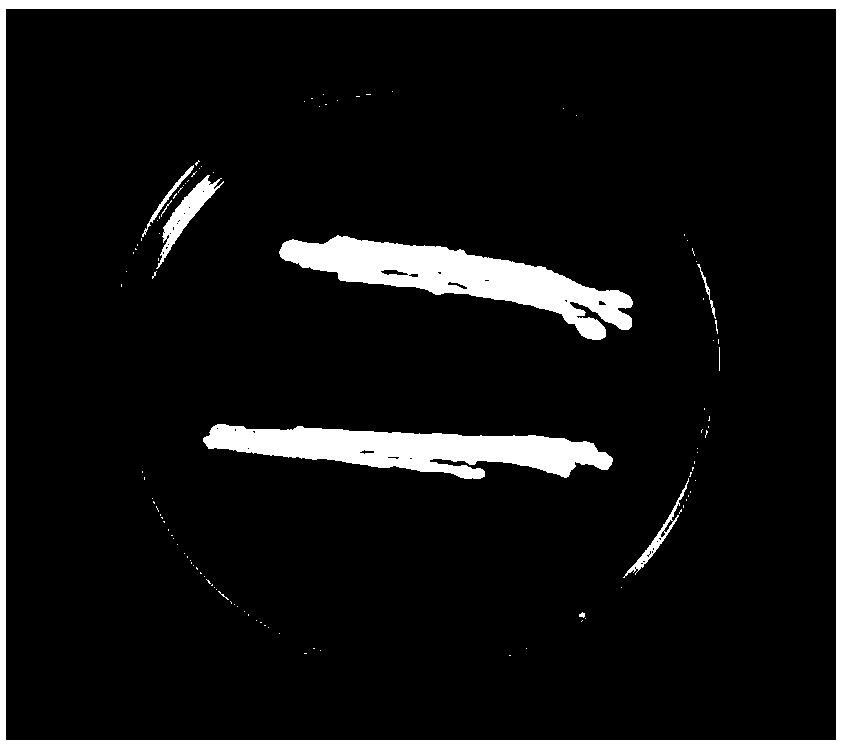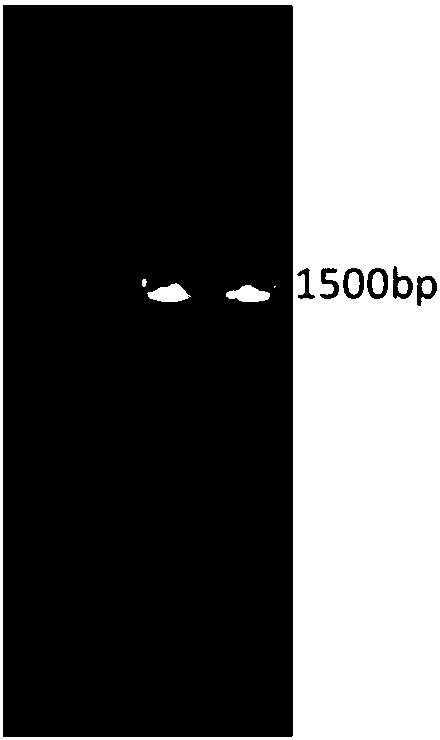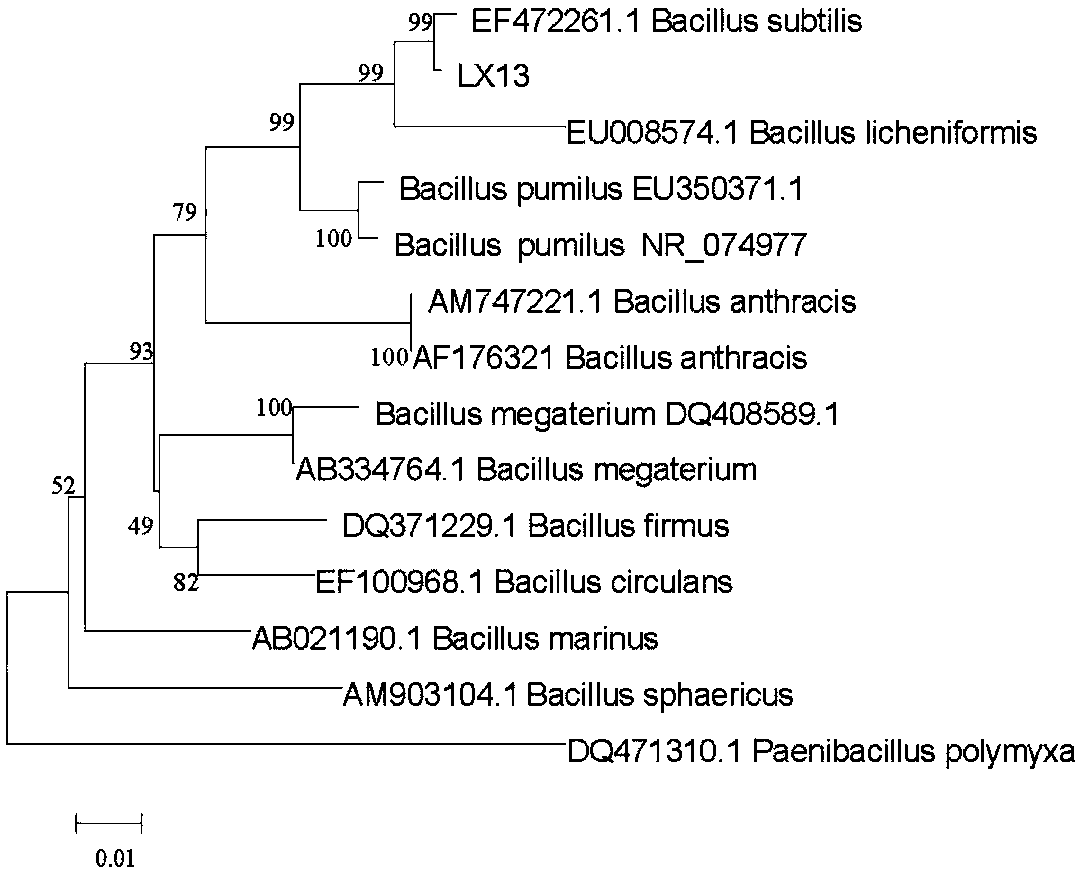Bacillus subtilis and application thereof
A technology of Bacillus subtilis and bacterial liquid, applied in the field of microorganisms, can solve the problems of hindering the application of microbial inoculants, single control effect, unstable control effect, etc. Effect
- Summary
- Abstract
- Description
- Claims
- Application Information
AI Technical Summary
Problems solved by technology
Method used
Image
Examples
Embodiment 1
[0025] Isolation, cultivation and identification of embodiment 1 bacterial strain
[0026] 1. Screening and isolation of strains
[0027] Pick a batch of single colonies on the plate, draw a line on the LB solid medium plate and place it upside down in a constant temperature incubator at 28°C for 1-2 days.
[0028] The soil was obtained from the peanut rhizosphere soil in the experimental field of Peanut Research Institute of Shandong Province. Weigh 5g of rhizosphere soil into a triangular flask of 45ml of sterile water, shake it for a while, draw 0.5ml of the supernatant and add it to a test tube containing 4.5ml of sterile water. 2 、10 3 、10 4 、10 5 、10 6 The multiples were serially diluted.
[0029] Use a micropipette to pipette 100 μl of soil suspension with different dilution factors on the NA plate, spread it evenly with a sterilized applicator, seal the plate and place it upside down in a constant temperature incubator at 28°C for 48 hours.
[0030] Pick a batch...
Embodiment 2
[0059] The mensuration of embodiment 2 bacterial strain antifungal ability
[0060] Use tweezers to inoculate small square pieces of about 0.5cm*0.5cm into PDA medium for peanut crown rot, white silkworm and peanut root rot, and inoculate them upside down in a greenhouse at 28°C for 2-3 days .
[0061] The single colony LX13 with the best fungal inhibitory effect was picked for the fungal confrontation experiment. When the fungus grows to about 1 / 3 of the size of the petri dish, inoculate bacteria at a distance of 1-2 cm from the fungus, and continue to culture in a greenhouse at 28 degrees Celsius for 2-3 days to observe the growth of the fungus.
[0062] Bacteriostatic rate=[(control fungal growth radius-treatment fungal growth radius) / control fungal growth radius]×100%
[0063] Experimental results: The confrontation test of LX13 against peanut crown rot was carried out for 3 times, as shown in Table 2, the inhibitory effect was obvious, the lowest inhibition rate was 75....
Embodiment 3
[0071] Example 3 Indoor Potted Plants of Bacterial Strains to Prevent and Control Peanut Diseases and Promoting Effect Test
[0072] After the strain was activated, it was inserted into LB liquid medium, placed in a shaker at 28 degrees at 180 r / min, and cultured for 3 days.
[0073] Propagation of preserved pathogenic bacteria of peanut crown rot, white silkworm and root rot: put oat grains into a triangular flask, soak in distilled water for 6 hours, pour off the water, and autoclave at 121°C for 20 minutes; Bacteria spp., S. spp., and root rot bacteria were inoculated into sterilized oat grains, cultured at 28°C for 7 days, and the inoculated bottle was shaken twice a day to make all oat grains have pathogenic bacteria, and the infected oat grains were obtained.
[0074] Pathogen inoculation: Peanuts (variety Luhua No. 8) were planted in pots in an artificial climate chamber, and the mass ratio of soil: vermiculite: nutrient soil was 2:1:1. The culture temperature is 28°C ...
PUM
 Login to View More
Login to View More Abstract
Description
Claims
Application Information
 Login to View More
Login to View More - R&D
- Intellectual Property
- Life Sciences
- Materials
- Tech Scout
- Unparalleled Data Quality
- Higher Quality Content
- 60% Fewer Hallucinations
Browse by: Latest US Patents, China's latest patents, Technical Efficacy Thesaurus, Application Domain, Technology Topic, Popular Technical Reports.
© 2025 PatSnap. All rights reserved.Legal|Privacy policy|Modern Slavery Act Transparency Statement|Sitemap|About US| Contact US: help@patsnap.com



